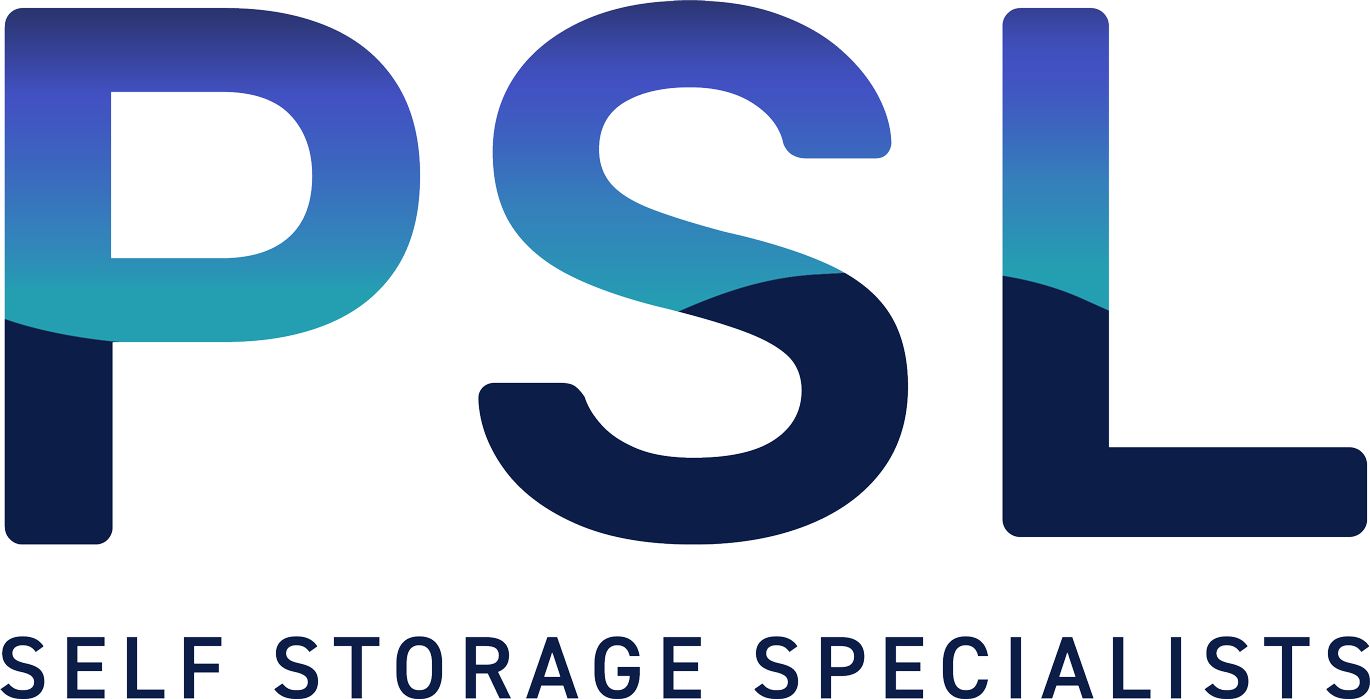Picture your company's funding structure like a building. At the bottom, you have the solid, low-risk ground floor – that's the senior debt from a bank. At the very top is the high-reward penthouse, which represents your own equity. High level mezzanine financing is the essential middle floor that connects the two, offering a flexible layer of capital that masterfully bridges the funding gap.
Unpacking High Level Mezzanine Finance
Mezzanine finance is a clever hybrid form of capital, blending the best features of both debt and equity. It's a sophisticated tool that established businesses use to bankroll major growth moves—think acquisitions, expansions, or management buy-outs—without watering down ownership as much as a pure equity round would.
Unlike a standard bank loan, which is secured against assets and gets paid back first, mezzanine debt is ‘subordinated’. All this means is that it sits behind senior debt in the repayment queue but ahead of equity if things go south. Because lenders are taking on a bit more risk, they expect a higher return, which they get through a unique mix of financial instruments.
Key Characteristics of Mezzanine Finance
This isn't a one-size-fits-all solution. Every deal is structured to fit the specific needs of the business, but you'll almost always find these core components:
- Subordinated Debt: At its heart, it’s a loan. But it’s a loan that only gets repaid after all the senior lenders (like the banks) have been paid in full.
- Higher Interest Rates: To make up for that higher risk, mezzanine loans come with interest rates that are significantly chunkier than those on senior debt.
- Equity Kicker: This is where the equity-like flavour comes in. Lenders receive an "equity kicker," usually in the form of warrants or options, giving them the right to buy a small piece of the company at a set price down the line. It lets them share in the upside they helped create.
- Patient Capital: The main loan amount is typically paid back in a single "bullet" payment at the end of the term, often 5-7 years later. This gives the business breathing room to put the capital to work on growth without being choked by heavy repayments early on.
Mezzanine financing is really an accelerator. It gives ambitious, cash-flow-positive companies the firepower to make bold moves that would be out of reach with traditional bank funding alone, ultimately driving a much higher return on equity for the original owners.
A Proven Tool in the UK Market
While it might sound like a newfangled financial product, mezzanine finance has been a trusted player in the UK for decades. It became a particularly vital tool for corporate and management buy-outs from the mid-1990s onwards, filling that crucial space between what banks were comfortable lending and the equity a management team could stump up. A 1995 Bank of England report even highlighted its widespread use in bridging this very gap in large-scale deals.
This history proves its lasting value. For businesses looking to grow their physical operations—maybe by adding new warehouses or production facilities—knowing all the funding options is critical. The capital unlocked through a mezzanine deal could easily be put towards major construction projects, including the installation of advanced mezzanine floors to squeeze every bit of value out of their operational space.
When to Use Mezzanine Finance for Growth

Knowing what high level mezzanine finance is gets you in the door. Knowing exactly when to use it is what makes the difference between a good move and a great one. This isn't your everyday capital for covering operational costs; think of it as rocket fuel for specific, game-changing moments in your company's life.
Mezzanine financing is the perfect tool when you're facing a massive growth opportunity that your bank can't fully fund, but you're not keen on giving away a huge chunk of equity. It’s tailor-made for high-stakes situations that promise big returns, which justifies its higher cost compared to standard bank debt.
These moments can redefine your company's place in the market, its scale, and its long-term value. Let's dig into the key scenarios where this flexible funding really shines.
Powering Management Buy-Outs
One of the most classic uses for mezzanine finance is the Management Buy-Out (MBO). This is when a company's existing leadership team wants to buy the business from the current owners. They know the business inside and out, but they rarely have enough personal capital to fund the whole purchase.
A senior lender might cover a big slice of the deal, but there’s almost always a funding gap. Mezzanine capital steps in to fill that void perfectly. It provides the rest of the funds needed to close the deal without forcing the management team to give up a controlling stake to a private equity firm.
This empowers the people who understand the business best to take the reins and drive it forward.
Fuelling Strategic Acquisitions
Buying a competitor, a supplier, or a company with a piece of tech you need can be a shortcut to explosive growth. But moves like that require serious capital—often far more than a bank will lend against your existing assets. Mezzanine lenders see things differently. They're willing to finance part of the acquisition based on the future cash flow of the combined companies.
This allows an ambitious business to seize a market opportunity, strengthen its position, or break into new territories without diluting ownership too much. The finance structure provides the patient capital needed to integrate the new business and actually see the benefits you planned for.
By bridging the gap between bank debt and equity, mezzanine finance enables companies to execute transformative acquisitions that would otherwise be impossible, accelerating their growth trajectory far beyond what organic expansion could achieve.
Financing Major Expansion Projects
Sometimes, growth means getting bigger, physically. We're talking about building a new factory, opening a national distribution centre, or undertaking a massive renovation to increase capacity. These projects are incredibly capital-intensive and can look too risky for traditional lenders.
Mezzanine funding is ideal for these situations. A logistics company might use it to build a new warehouse, complete with all the latest automation. A self-storage business could secure the funds for a large-scale project like installing robust external garage units to expand its lettable space and add new revenue streams.
This kind of investment is backed by a clear business case and the future income the expansion will generate. The mezzanine lender provides the critical capital to make it happen, confident that the project will create the cash flow needed to pay it back. It’s a tool that lets businesses make bold moves, securing their competitive edge for years.
How Mezzanine Capital Adapts to Market Changes
While many financial tools are fair-weather friends, thriving only in stable economies, mezzanine finance really shows its worth when the market gets choppy. It’s a remarkably resilient form of capital that often becomes more attractive just as traditional lenders start getting nervous, acting as a crucial shock absorber during economic shifts.
This adaptability makes it a strategic ace up the sleeve for UK businesses looking to keep their momentum. When senior lenders tighten their criteria because of rising interest rates or market jitters, the funding gap for ambitious projects can suddenly look like a chasm. Mezzanine finance is designed to step right into that gap, providing the essential capital that keeps growth plans on track.
Thriving in Economic Uncertainty
In a strong economy with low interest rates, senior debt from banks is plentiful and cheap. It's the easy option, and businesses can often secure most of the funding they need through these traditional channels. But when the economic winds change, that landscape shifts—fast.
Senior lenders become more risk-averse. They dial back their loan-to-value ratios and start demanding stricter terms. This is precisely the moment when the phones start ringing for mezzanine capital. It becomes the go-to solution for filling the much larger funding gap that cautious banks leave behind.
Mezzanine financing is counter-cyclical. Its demand often spikes when senior debt markets tighten, providing a vital source of capital that enables businesses to push ahead with acquisitions, expansions, and buy-outs, even when the economic climate is challenging.
This ability to perform in fluctuating markets makes it a reliable part of any corporate finance toolkit. It ensures that good, high-growth companies aren’t forced to hit the brakes simply because of temporary market jitters or a conservative turn in bank lending policies.
A Renewed Focus Amidst Inflation and Interest Rate Rises
The UK’s economic climate after 2020 is a perfect case study. Marked by climbing inflation and a series of base rate hikes from the Bank of England, the environment became tough. As the cost of senior debt shot up and lending standards got tougher, many businesses saw their growth plans put in jeopardy.
This environment has sparked a renewed appreciation for the flexibility of mezzanine capital. While the flood of cheap senior debt and equity after 2008 reduced its necessity in many deals, mezzanine finance never stopped being a vital, flexible instrument. It’s particularly crucial for structuring deals during uncertain times when senior lenders get wary. As the UK grappled with inflation and rising rates, this cyclical demand came roaring back. You can find more great insights on this trend from the legal experts at Osborne Clarke.
Here’s how mezzanine finance gives businesses a strategic edge in times like these:
- Fixed Costs: Many mezzanine deals can be structured with fixed interest rates, giving you cost certainty in a world of volatile rates.
- Patient Capital: The structure often includes interest that can be rolled up (PIK interest), which eases cash flow pressures when inflation is driving up your operational costs.
- Growth Focused: Mezzanine lenders are backing your business’s long-term growth story, not just the current value of its assets. This makes them more willing to fund ambitious plans, even during a downturn.
At the end of the day, mezzanine finance isn’t just for the good times. It’s a robust, all-weather funding solution that empowers businesses to navigate economic storms, secure the capital they need for complex deals, and keep growing when others are stuck on the sidelines.
Understanding the Structure of a Mezzanine Deal
Opening the bonnet on a high level mezzanine deal reveals a finely tuned engine with several key parts working together. It’s not as straightforward as a simple bank loan, but understanding its components demystifies the process. More importantly, it shows how this type of funding is structured to fuel growth while balancing risk and reward for everyone involved.
At its core, a mezzanine deal blends the features of both debt and equity. The structure is designed to be patient, giving your business the breathing room it needs to execute its growth strategy before the main repayment is due. This usually involves a mix of regular interest payments, deferred interest, and a final slice of the upside for the lender.
Let’s break down the three main components you'll almost certainly encounter.
The Anatomy of a Mezzanine Return
Mezzanine lenders are typically aiming for a total annual return of 12% to 20%. This isn't just a simple interest rate; it's a composite return pieced together from a few different sources, each impacting your cash flow in a unique way.
-
Cash Interest: This is the most familiar part of the deal. It works just like a standard loan, with interest paid out regularly (usually quarterly or semi-annually) from your company's cash flow. The rate is higher than senior debt, but it’s only one piece of the lender's total return puzzle.
-
Payment-In-Kind (PIK) Interest: Here’s where things get clever. PIK is a powerful feature that helps you hold onto your cash when you need it most. Instead of being paid in cash, this interest is "paid" by simply adding it to the total loan balance. That interest then compounds, growing the principal amount you'll owe at the end of the term. It’s a smart way to keep more cash in the business during that critical growth phase.
-
The Equity Kicker: This is the lender’s reward for taking on more risk than a traditional bank. The "kicker" is a small stake in your company's future success, usually granted through warrants or options. These give the lender the right to buy a small percentage of your company’s shares at a predetermined price, allowing them to share in the value they helped you create.
The real beauty of this structure is its flexibility. It aligns the lender’s success directly with yours. They only achieve their full return if your business thrives, making them more of a partner than a simple creditor.
To really get your head around where mezzanine financing fits, it’s helpful to understand the intricacies of the real estate capital stack. This visual hierarchy makes it crystal clear who gets paid first and why mezzanine holds its unique middle-tier position.
The infographic below shows the capital stack, illustrating how each layer of funding carries a different level of risk and potential return.

As you can see, high level mezzanine sits comfortably above equity but below senior debt, bridging the gap with its hybrid risk-and-return profile.
Repayment Terms and Covenants
The repayment of a mezzanine loan is typically a single "bullet" payment at the end of the term, often five to seven years down the line. This is timed to coincide with a major event for the company, like a sale, a refinancing, or an IPO.
Finally, the deal will include financial covenants. Think of these as agreed-upon rules of the road—financial performance metrics your company must maintain to show you're on track. They might include targets for things like profitability or debt levels. Meeting these covenants is crucial for keeping a good relationship with your lender and ensuring the whole agreement runs smoothly.
Weighing the Benefits and Risks
Understanding the structure of high-level mezzanine finance is one thing, but deciding if it’s the right move for your business means taking a clear-eyed look at both its powerful advantages and its significant risks. This isn't just another loan. It’s a strategic partnership that can supercharge your growth, but it comes with a higher price tag and tougher expectations than conventional funding.
Mezzanine capital is really a double-edged sword. On one hand, it offers fantastic flexibility and access to substantial funds that can unlock major opportunities. On the other, it demands strong performance and carries serious consequences if things don’t go to plan. A balanced assessment is absolutely essential before you commit.
The Major Advantages
The main appeal of mezzanine finance lies in its ability to fuel ambitious growth without forcing you to give up control of your company. For founders and management teams who have poured everything into their business, this is a massive plus.
Another key benefit is the sheer speed and flexibility on offer. Mezzanine lenders are often more entrepreneurial than traditional banks. They can structure creative deals for unique situations, like funding a major fit-out of new commercial mezzanine floors, which can directly boost a property's income-generating potential.
Mezzanine financing empowers business owners to retain a larger equity stake while still accessing the capital needed for significant growth. This means you keep control of your company's direction and enjoy a greater share of the financial upside you create.
This type of strategic capital also gives your return on equity (ROE) a serious boost. By using mezzanine debt to fund a project instead of raising more equity, you amplify the returns for the original shareholders. The business grows faster, its value increases, and the owners’ slice of that bigger pie remains substantial.
Understanding the Potential Risks
The most obvious downside is the cost. With target returns for lenders often sitting between 12% and 20%, mezzanine finance is considerably more expensive than a senior bank loan. This higher cost is a direct reflection of the lender's subordinated position in the capital stack—they take on more risk, so they demand a higher reward.
This means your business must have strong, predictable cash flows to comfortably service the cash interest portion of the loan. Any project funded with mezzanine capital needs to generate a high enough return to not only cover these costs but also deliver a healthy profit.
Because it's often used in property ventures, understanding performance indicators is critical. When weighing a deal, especially in real estate, it's vital to consider the key real estate investment metrics that will ultimately determine its success.
The other major risk is what happens if you default. If your company underperforms and breaches the financial covenants in your agreement, the mezzanine lender holds a lot of power. Thanks to the "equity kicker" (like warrants), they can have the right to convert their debt into shares, potentially taking a sizeable ownership stake in your company. This is the trade-off for their patient capital, and it's a risk that must be carefully managed.
Is High-Level Mezzanine Right for Your Business?

After breaking down the mechanics, benefits, and risks, the big question is still on the table: is high-level mezzanine financing the right move for your company? This isn't just about needing cash. It's about having a specific blend of stability, ambition, and a crystal-clear vision for where you're headed.
Let's be clear: this type of funding isn't a lifeline for a struggling business. Think of it as rocket fuel for an already successful company that's ready to make a major leap. Lenders want to see a compelling story backed by solid numbers and a management team they can trust to get the job done.
Profile of an Ideal Candidate
Certain businesses are practically made for mezzanine capital. If your company ticks these boxes, you could be a perfect fit.
- Consistent, Predictable Cash Flow: You need a proven track record of generating reliable profits. Lenders must be confident that you can comfortably handle the interest payments without putting a strain on your daily operations.
- A Strong and Experienced Management Team: Investors aren't just backing your business plan; they're backing you. A leadership team with a history of success gives them the confidence that your growth strategy will be executed effectively.
- A Clear, High-Growth Strategy: You need a specific, well-defined plan for the money. Whether it’s an acquisition, a major expansion, or a management buyout, your plan must show a clear path to a significant jump in business value.
A business ready for mezzanine finance has outgrown traditional bank loans but isn't quite ready—or willing—to give up significant control to equity investors. It’s for the ambitious company that needs a serious capital injection to pull off a transformative project.
Bridging the UK SME Funding Gap
This form of finance is especially vital for small and medium-sized enterprises (SMEs) here in the UK. Many established SMEs find themselves stuck in a funding no-man's-land—too mature for venture capital, but seen as too risky by senior lenders for large, unsecured loans.
SMEs are the backbone of the British economy. In fact, they make up 99.2% of all UK businesses, with around 5.55 million in operation back in 2021. Despite their importance, many struggle to get traditional financing, making mezzanine a crucial bridge that provides subordinated debt with equity-like features to strengthen their credit structure. You can discover more about the crucial role of mezzanine finance for UK businesses on channelcapital.io.
This capital bridge allows these established businesses to fund their next major milestone without hitting a wall. It gives them the firepower to compete, innovate, and scale up, ensuring they can continue to drive economic growth.
For companies in sectors like self-storage or logistics, this could be the key to securing funds for a major site development. By exploring different financing options for such projects, developers can find the right capital structure to turn ambitious plans into profitable realities. Ultimately, taking a hard look at your company's financial health, strategic clarity, and appetite for risk will tell you if you're ready to use this powerful tool.
Got Questions About Mezzanine Financing?
Diving into the world of mezzanine financing is smart, but it naturally brings up some big questions. It’s a powerful tool, but its unique structure means you need to be absolutely clear on the details before you commit.
Below, we’ve cut through the jargon to give you straightforward answers to the most common queries we hear. This is about giving you the real-world information needed to decide if this funding path truly fits your company’s ambitions.
How Much Does Mezzanine Financing Actually Cost?
You can generally expect the total annual cost for mezzanine financing to land somewhere between 12% and 20%. This isn’t just a simple interest rate, though; it’s a blend of three key components.
First, there's a cash interest rate, which you’ll pay regularly out of your profits. Then there’s PIK (Payment-In-Kind) interest, which gets tacked onto the loan balance to be paid off later. Finally, there's the "equity kicker"—things like warrants that give the lender a small ownership stake down the road. While it's certainly more expensive than a standard bank loan, it’s often a much better deal than giving away a large chunk of your company through a pure equity raise.
What Kind of Companies Are a Good Fit for Mezzanine Finance?
The ideal candidates are established companies that already have a history of strong, predictable cash flow and a management team that knows what it's doing. Lenders are looking for businesses with a clear, credible plan for growth, whether that’s a strategic acquisition, a management buy-out, or a major expansion of your facilities.
Your company needs to be able to comfortably handle the cash interest payments while still executing the growth strategy. At the end of the day, the goal is to create a huge win for everyone—a successful exit for the lender and a major return for you, the owner.
An ideal candidate has a solid operational track record and a clear, ambitious vision for the future. The lender is not just funding a balance sheet; they are investing in a growth story led by a team they can trust to deliver results.
What Happens If We Can’t Repay the Loan?
This is the big one. Because mezzanine debt is "subordinated," the senior lender—usually the bank—always gets paid back first if things go south. That’s a key part of the deal.
However, if your business underperforms, the mezzanine lender has specific rights to protect their investment. In a worst-case default scenario, they might be able to convert their debt into company stock, potentially taking a significant ownership stake. This is the main risk you need to understand and weigh carefully. It’s also why having a rock-solid, realistic business plan is non-negotiable.
How Long Do These Loans Typically Last?
Mezzanine loans are designed for medium-term growth, with terms usually running between five to seven years. This isn't short-term cash; it's patient capital.
The structure gives your company enough breathing room to execute its growth strategy before the principal and all that accrued interest come due. The repayment is often a single "bullet" payment timed to coincide with a major liquidity event, like a sale of the company or a refinancing, which unlocks all the value you've created.
For more articles, case studies, and expert opinions on a range of financial topics, including answers to common questions about raising capital, have a look at Fundpilot's blog for further insights.
Ready to fund your next major self-storage project? The team at Partitioning Services Limited offers structured finance packages that help you maximise your space and your return on investment. Learn more about our flexible solutions.
Looking for help with your next project?
Whether you are new to self storage or already have an established self storage facility, we can provide you with guidance and a full quotation for any aspect of your works.

